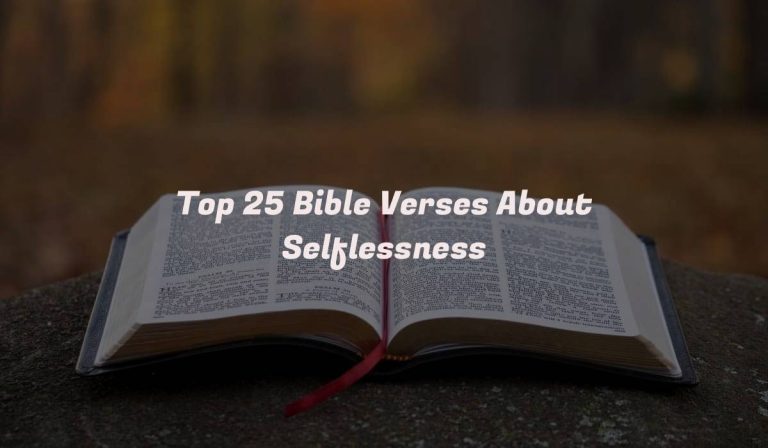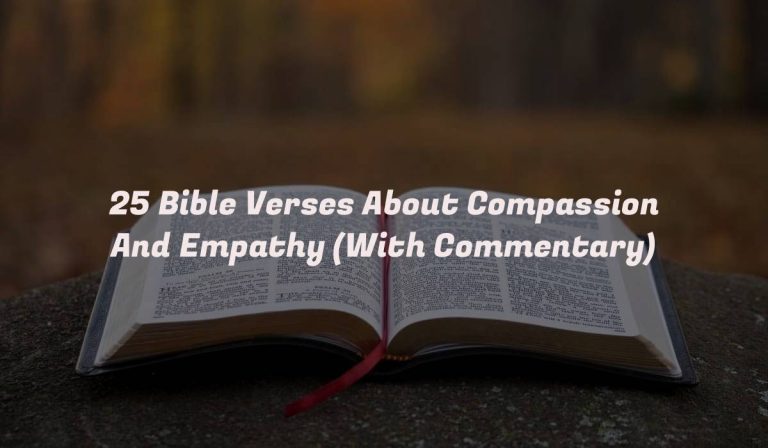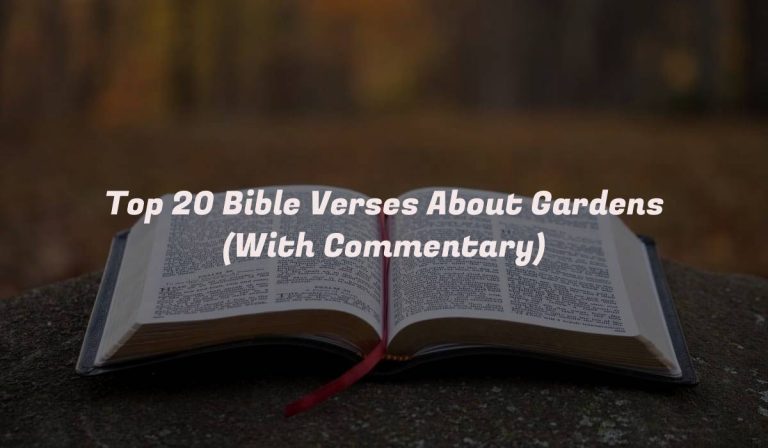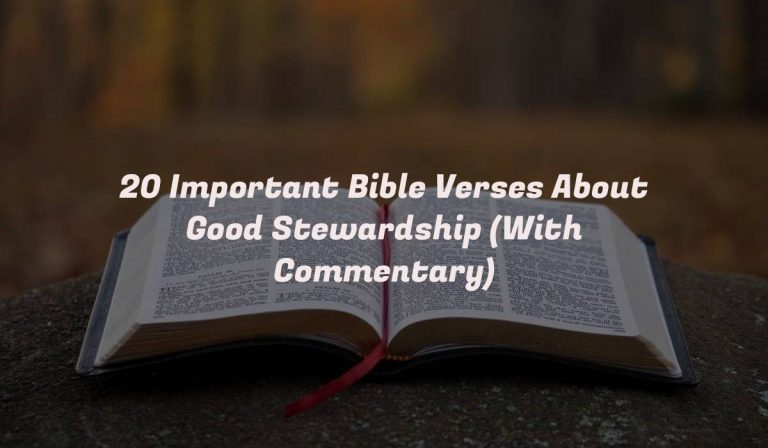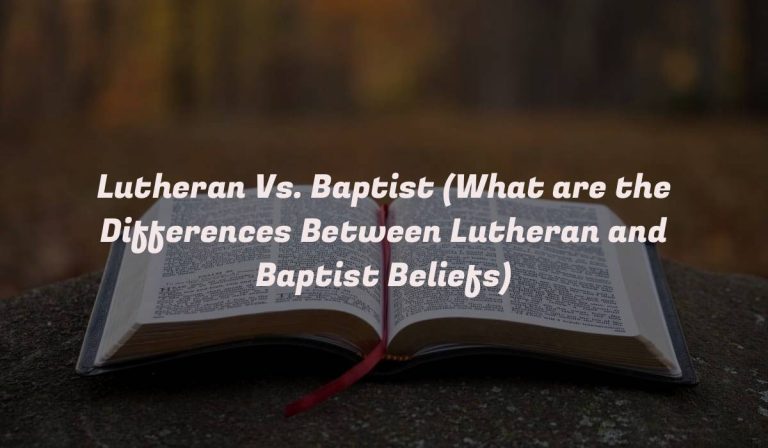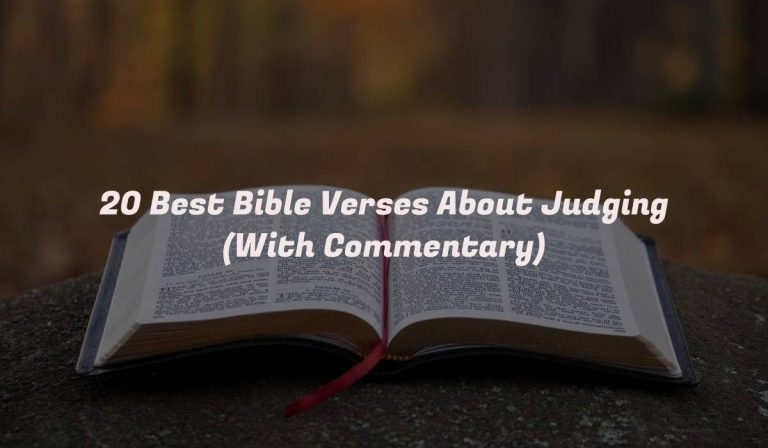Genesis 1:9-13 Meaning and Commentary
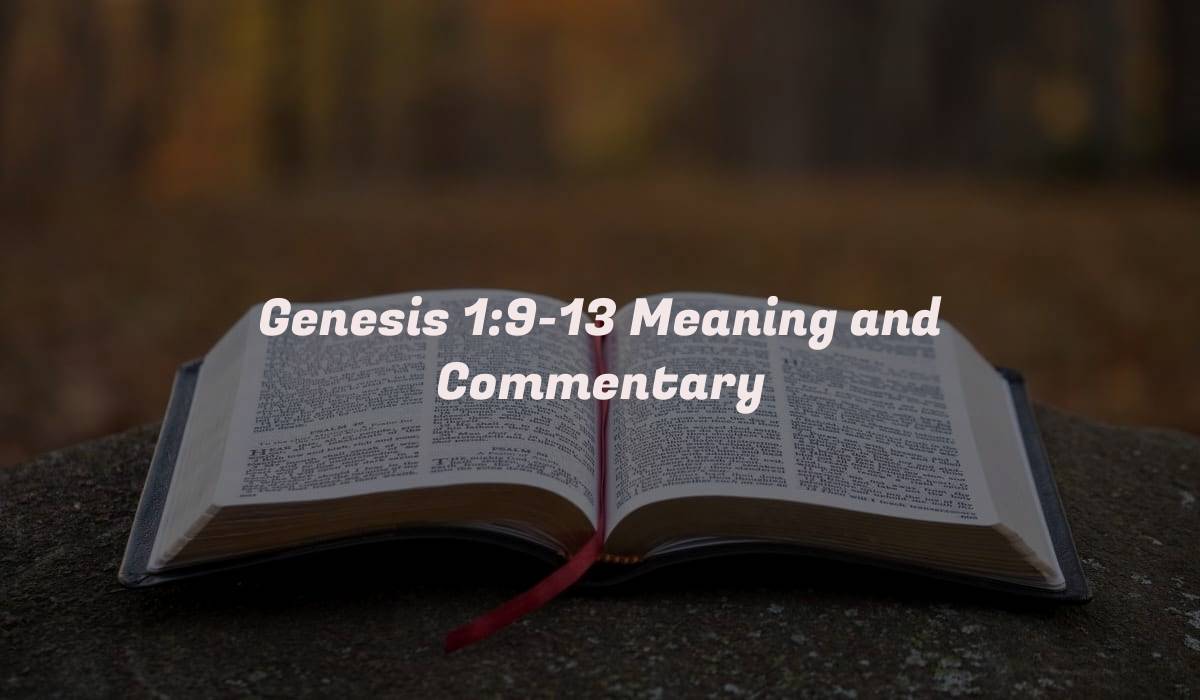
Genesis 1:9-13
“9 And God said, ‘Let the waters under the heaven be gathered together unto one place, and let the dry land appear:’ and it was so. 10 And God called the dry land Earth; and the gathering together of the waters called he Seas: and God saw that it was good. 11 And God said, ‘Let the earth bring forth grass, the herb yielding seed, and the fruit tree yielding fruit after his kind, whose seed is in itself, upon the earth:’ and it was so. 12 And the earth brought forth grass, and herb yielding seed after his kind, and the tree yielding fruit, whose seed was in itself, after his kind: and God saw that it was good. 13 And the evening and the morning were the third day.”
Genesis 1:9-13 Meaning
Genesis 1:9-13 describes the third day of creation. It describes the deliberate separation of land and water, the emergence of vegetation on land, and the intrinsic capability of the Earth to produce diverse forms of plant life. It emphasizes God’s authority over creation, His ability to command and bring about what He desires, and His affirmation that each element created is good.
This passage is an integral part of the Genesis creation account, illustrating the order and purpose in God’s creative process and emphasizing the significance of each created component within the world.
Explanation and Commentary of Genesis 1:9-13
In Genesis 1:9-13, the narrative unfolds to reveal the third day of creation. It’s a poetic and profound depiction of God’s deliberate craftsmanship and divine authority in shaping the world as we know it.
As the passage begins, we witness a powerful decree from God. He commands the waters to recede and the land to emerge. In an instant, the separation occurs, unveiling the distinction between the earth and the seas. This act of separation signifies an ordered and purposeful design, where boundaries are established, creating distinct habitats.
God then bestows names upon these newly formed entities: the dry land becomes “Earth,” and the gathered waters are termed “Seas.” Through this act of naming, there’s a sense of God’s ownership and intimate knowledge of His creation, emphasizing His authority and intentionality in bringing everything into existence.
Following this separation and naming, the narrative shifts to the introduction of vegetation. God commands the earth to produce vegetation: plants yielding seeds and trees bearing fruits, each after their kind. This divine instruction triggers a miraculous response from the earth. It obeys, bringing forth an astounding array of plant life—grasses, herbs, trees, each with its unique capacity to bear seeds and fruits.
What strikes me most about this passage is the theme of divine order, creativity, and purpose. There’s an unmistakable rhythm to the creation story, a methodical unfolding orchestrated by God. Each element emerges at the precise moment according to God’s divine plan, and after each step, God pauses to assess His creation and pronounces it “good.”
It’s a testament to God’s creativity and the beauty of diversity in creation. The text portrays a God who not only commands but also values His creation. His declaration that it was “good” underscores the inherent value and harmony within the world as He intended.
This passage from Genesis encapsulates the intricate balance and interdependence woven into the fabric of creation. It serves as a reminder of God’s sovereignty, His intimate involvement in the world’s formation, and His delight in the diverse tapestry of life He has brought forth. As we reflect on these verses, we’re invited to marvel at the intricacy of creation and appreciate the profound wisdom and artistry of the Creator.
Context of Genesis 1:9-13
Genesis 1:9-13 is part of the larger creation narrative found in the book of Genesis, specifically detailing the events of the third day of creation according to the biblical account.
The context of Genesis 1:9-13 is within the broader framework of the Genesis creation story, which spans the first chapter of the Bible. It follows the initial verses where God creates light, separates light from darkness, and establishes day and night on the first day. On the second day, God separates the waters, creating the expanse or sky.
In Genesis 1:9-13, the narrative progresses as God continues the process of creation:
- Separation of Waters and Land (Verses 9-10): On the third day, God commands the waters gathered in one place, allowing the dry land to appear. This act establishes the distinction between land and sea, forming the Earth and Seas. The naming of these elements signifies God’s authority over creation.
- Introduction of Vegetation (Verses 11-13): God commands the Earth to bring forth vegetation—plants yielding seeds and trees bearing fruit. As a response to God’s command, the Earth produces various kinds of plants, showcasing the diversity and richness of the plant kingdom.
The context of these verses is critical in understanding the sequential and ordered manner in which God creates the world. It highlights God’s power to command and bring about specific elements of creation, establishing distinct realms within the universe—land and sea—and introducing life in the form of vegetation.
The passage emphasizes the progression of creation, demonstrating God’s intentional design and the rhythm in which He brings forth different components of the natural world. Each day of creation builds upon the previous one, contributing to the overall harmony and complexity of the created order.
Genesis 1:9-13 forms part of a larger narrative illustrating God’s sovereignty over creation, His purposeful design, and His affirmation of the goodness of His creative work at every stage. It sets the stage for subsequent events in the Genesis creation account while emphasizing the significance of land, seas, and vegetation in the grand scheme of God’s creation.
Breaking Down the Key Parts of Genesis 1:9-13
- Separation of Waters and Land (Verses 9-10): God commands the waters gathered in one place, allowing the dry land to appear. This divine separation creates distinct realms—the Earth and Seas. The act of naming these elements by God signifies His authority over the creation.
- Naming and Identity (Verse 10): God assigns names to the land and seas, calling the dry land “Earth” and the gathered waters “Seas.” This act of naming illustrates God’s sovereignty and intimate knowledge of His creation.
- Emergence of Vegetation (Verses 11-13): God commands the Earth to produce vegetation—plants yielding seeds and trees bearing fruit. The text emphasizes the response of the Earth to God’s command, showcasing its capacity to yield various forms of plant life.
- Reproduction After Its Kind (Verse 12): The text highlights the inherent nature of each plant to reproduce according to its kind, emphasizing the intricate design within creation and the continuity of life.
This passage highlights God’s authority to separate and name elements of creation, establishing boundaries and identities. It also underscores the Earth’s responsiveness to God’s command, demonstrating the inherent fertility and productivity designed into the natural world.
The specific emphasis on the emergence of vegetation accentuates God’s intention for the Earth to be abundant and fruitful, capable of sustaining life. The notion of each plant reproducing after its kind speaks to the consistency and orderliness inherent in God’s creation, portraying a system designed to perpetuate and sustain life.
Bible Study on Genesis 1:9-13
Genesis 1:9-13 provides a fascinating insight into God’s intentional and ordered creation of the Earth. In these verses, we witness the third day of creation, where God separates the waters, establishes land and seas, and brings forth vegetation. This passage showcases God’s authority, creativity, and purpose in shaping the world we inhabit.
Key Points
Separation and Naming (Verses 9-10):
- God commands the waters to gather in one place, allowing dry land to appear.
- God names the dry land “Earth” and the gathered waters “Seas,” asserting His authority and sovereignty over creation.
Emergence of Vegetation (Verses 11-13):
- God commands the Earth to produce vegetation: plants yielding seeds and trees bearing fruit.
- The Earth responds obediently, bringing forth various types of plant life according to God’s command.
Reproductive Order (Verse 12)
- Emphasis is placed on each plant’s ability to reproduce after its kind, reflecting God’s design for continuity and diversity within creation.
Reflection/Application
- God’s creation reveals His intentional design and purpose. He separates, names, and brings forth life according to His command, demonstrating His authority over all elements of creation.
- The Earth responds obediently to God’s command, highlighting the inherent order and productivity woven into the natural world.
- The diversity and continuity in vegetation reflect God’s wisdom and provision, showcasing His care for sustaining life on Earth.
Genesis 1:9-13 unveils God’s creative power and purposeful design. It illustrates His authority in establishing boundaries and identities within creation, showcasing His intention for abundance and sustenance. This passage invites us to marvel at God’s sovereignty over the natural world and inspires gratitude for His provision and care evident in every aspect of creation.
Biblical Translations of Genesis 1:9-13
Genesis 1:9-13 New International Version (NIV)
“And God said, ‘Let the water under the sky be gathered to one place, and let dry ground appear.’ And it was so. God called the dry ground ‘land,’ and the gathered waters he called ‘seas.’ And God saw that it was good. Then God said, ‘Let the land produce vegetation: seed-bearing plants and trees on the land that bear fruit with seed in it, according to their various kinds.’ And it was so. The land produced vegetation: plants bearing seed according to their kinds and trees bearing fruit with seed in it according to their kinds. And God saw that it was good. And there was evening, and there was morning—the third day.”
Genesis 1:9-13 King James Version (KJV)
“And God said, ‘Let the waters under the heaven be gathered together unto one place, and let the dry land appear:’ and it was so. And God called the dry land Earth; and the gathering together of the waters called he Seas: and God saw that it was good. And God said, ‘Let the earth bring forth grass, the herb yielding seed, and the fruit tree yielding fruit after his kind, whose seed is in itself, upon the earth:’ and it was so. And the earth brought forth grass, and herb yielding seed after his kind, and the tree yielding fruit, whose seed was in itself, after his kind: and God saw that it was good. And the evening and the morning were the third day.”
Genesis 1:9-13 English Standard Version (ESV)
“And God said, ‘Let the waters under the heavens be gathered together into one place, and let the dry land appear.’ And it was so. God called the dry land Earth, and the waters that were gathered together he called Seas. And God saw that it was good. And God said, ‘Let the earth sprout vegetation, plants yielding seed, and fruit trees bearing fruit in which is their seed, each according to its kind, on the earth.’ And it was so. The earth brought forth vegetation, plants yielding seed according to their own kinds, and trees bearing fruit in which is their seed, each according to its kind. And God saw that it was good. And there was evening and there was morning, the third day.”
Genesis 1:9-13 New Living Translation (NLT)
“Then God said, ‘Let the waters beneath the sky flow together into one place, so dry ground may appear.’ And that is what happened. God called the dry ground ‘land’ and the waters ‘seas.’ And God saw that it was good. Then God said, ‘Let the land sprout with vegetation—every sort of seed-bearing plant, and trees that grow seed-bearing fruit. These seeds will then produce the kinds of plants and trees from which they came.’ And that is what happened. The land produced vegetation—all sorts of seed-bearing plants, and trees with seed-bearing fruit. Their seeds produced plants and trees of the same kind. And God saw that it was good. And evening passed and morning came, marking the third day.”
Genesis 1:9-13 New King James Version (NKJV)
“Then God said, ‘Let the waters under the heavens be gathered together into one place, and let the dry land appear’; and it was so. And God called the dry land Earth, and the gathering together of the waters He called Seas. And God saw that it was good. Then God said, ‘Let the earth bring forth grass, the herb that yields seed, and the fruit tree that yields fruit according to its kind, whose seed is in itself, on the earth’; and it was so. And the earth brought forth grass, the herb that yields seed according to its kind, and the tree that yields fruit, whose seed is in itself according to its kind. And God saw that it was good. So the evening and the morning were the third day.”
Genesis 1:9-13 Christian Standard Bible (CSB)
“Then God said, ‘Let the water under the sky be gathered into one place, and let the dry land appear.’ And it was so. God called the dry land ‘earth,’ and the gathering of the water he called ‘seas.’ And God saw that it was good. Then God said, ‘Let the earth produce vegetation: seed-bearing plants and fruit trees on the earth bearing fruit with seed in it according to their kinds.’ And it was so. The earth produced vegetation: seed-bearing plants according to their kinds and trees bearing fruit with seed in it according to their kinds. And God saw that it was good. Evening came and then morning: the third day.”
Genesis 1:9-13 The Message (MSG)
“God spoke: ‘Separate! Water-beneath-Heaven, gather into one place; Land, appear!’ And there it was. God named the land Earth. He named the pooled water Ocean. God saw that it was good. God spoke: ‘Earth, green up! Grow all varieties of seed-bearing plants, every sort of fruit-bearing tree.’ And there it was. Earth produced green seed-bearing plants, all varieties, and fruit-bearing trees of all sorts. God saw that it was good. It was evening, it was morning—Day Three.”
Final thoughts
In Genesis 1:9-13, we witness the unfolding of God’s creative work during the third day of creation. This passage showcases God’s authority in separating land and seas, His intimate involvement in bringing forth vegetation, and His design for continuity and abundance within the natural world.
Through this glimpse into the ordered and purposeful nature of creation, we’re invited to marvel at God’s sovereignty, wisdom, and provision evident in every detail of the world around us.
It reminds us of our Creator’s care for sustaining life and prompts gratitude for His remarkable workmanship displayed in the beauty and diversity of the Earth.

